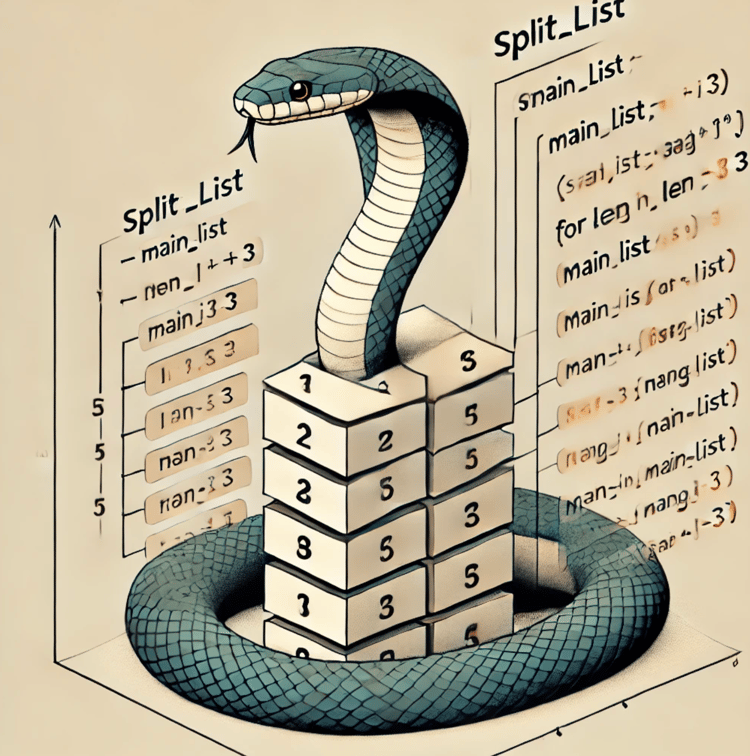Course
Reversing a list is fundamental in Python programming and is often employed in algorithms, data processing, and general problem-solving. Whether you're sorting data, analyzing sequences in reverse, or want to add a twist to your code, knowing how to reverse a list is something you should know.
In this guide, we'll explore Python's most effective methods to reverse a list. l’ll break down each technique and provide clear explanations and code examples so you can choose the best approach for your specific problem. If you're starting your Python journey, DataCamp's Introduction to Python course is the resource I recommend for building a solid foundation in Python programming. You'll learn essential concepts like list handling and data structures.
Quick Answer
The easiest way to reverse a list in Python is using slicing ([::-1]), which creates a new reversed list without modifying the original:
numbers = [1, 2, 3, 4, 5]
reversed_numbers = numbers[::-1]
print(reversed_numbers) # Output: [5, 4, 3, 2, 1]When you use [::-1]:
-
The empty start and stop (
:) mean "use the whole list." -
The
-1step moves through the list in reverse order.
Understanding List Reversal in Python
In Python, reversing a list means changing the order of elements so that the last item appears first and the first item appears last.
Why reverse a list?
List reversal plays a critical role in many data processing and algorithmic tasks. Here are a few examples where reversing a list becomes necessary:
-
Data Analysis: Viewing recent data first, such as reversing a list of timestamps or transaction entries.
-
Sorting and Organizing Data: Reversing sorted data without sorting again.
-
Algorithms: Traversing data from end to beginning, as required in specific search algorithms, stack operations, or recursive functions.
In-place reversal vs. reversed copy
Python offers two main approaches for reversing a list. We will cover different methods more comprehensively below, but for now, I want to make this distinction clear.
In-place reversal
This method directly modifies the original list without creating a new one. The reverse() method performs this operation, which is efficient for memory as it doesn't need additional storage. However, this method alters the original data.
#Original list
numbers = [1, 2, 3, 4, 5]
#Reverse the list in place
numbers.reverse()
print(numbers)
#Output: [5, 4, 3, 2, 1]Reversed copy
You can also use techniques like slicing ([::-1]) or the reversed() function to generate a new list in reversed order. This approach preserves the original list, so I would use a reversed copy method if you need the original data intact.
###Original list
numbers = [1, 2, 3, 4, 5]
### Create a reversed copy using slicing
reversed_numbers = numbers[::-1]
print(reversed_numbers) # Output: [5, 4, 3, 2, 1]
print(numbers) #Original list remains [1, 2, 3, 4, 5]How to Reverse a List in Python
This section will cover what I think are two of the most popular techniques for reversing a list in Python: the reverse() method and list slicing. Both methods are simple and provide unique benefits depending on your use case. These are the same two methods we looked at previously when showing the distinction between an in-place reversal and a reversed copy, but now I want to look a little more closely at what is happening with the code in each case.
Using the reverse() method to reverse a list
The reverse() method is a built-in Python function that modifies the original list directly. This is an in-place reversal, meaning it does not create a new list. Instead, it reorders the existing list's elements in reverse.
The reverse() method is efficient for memory since it doesn't require creating a copy of the list. However, it permanently changes the order of elements in the original list, so it's best used when the initial list is not needed in its original order.
#Python Example: Reversing a list in place
numbers = [1, 2, 3, 4, 5]
numbers.reverse()
print(numbers) #Output: [5, 4, 3, 2, 1]Using list slicing to reverse a list
List slicing is another method that lets you reverse a list. Unlike reverse(), slicing returns a new list. By using the slicing syntax [::-1], you can reverse the order of elements without modifying the original list. This method is helpful if you need a reversed copy while preserving the original.
The slicing technique is versatile and straightforward to use. Since it creates a new list, it's helpful when you want to maintain the original list's order.
#Python Example: Reversing a list with slicing
numbers = [1, 2, 3, 4, 5]
reversed_numbers = numbers[::-1]
print(reversed_numbers) # Output: [5, 4, 3, 2, 1]
print(numbers) # Original list remains [1, 2, 3, 4, 5]Here, reversed_numbers is a new list containing the elements of numbers in reverse order, while numbers remains unchanged.
Choosing the right technique
In summary, use reverse() for in-place modifications when you don’t need the original list in its initial order. Use slicing ([::-1]) when you want a reversed list copy without altering the original.
More Advanced Techniques for Reversing a List in Python
Beyond basic methods, Python offers more advanced techniques for reversing lists that provide more flexibility and efficiency. Let's look at two methods: the reversed() function (notice the 'd' at the end) and list comprehensions. These approaches reverse lists and introduce valuable functionality in more complex coding situations.
Using the reversed() function
The reversed() function in Python is an iterator that yields elements in reverse order without modifying the original list. Because it creates an iterator rather than a new list, reversed() is memory-efficient, making it a good choice when working with large datasets.
Basically, the reversed() function is good when you want to iterate over a list in reverse order without creating a copy. You can also convert the iterator into a list if you need a reversed version of the list itself.
numbers = [1, 2, 3, 4, 5]
#Convert the iterator to a list
reversed_numbers = list(reversed(numbers))
print(reversed_numbers) # Output: [5, 4, 3, 2, 1]
print(numbers) #Original list remains unchanged: [1, 2, 3, 4, 5]In this example, reversed(numbers) creates an iterator, which is then converted to a list using list(). You can also use reversed() directly in a loop if you only need to process elements in reverse without storing them.
Using list comprehensions to reverse a list
List comprehensions offer a flexible way to reverse a list by building a new list with elements in reverse order. They're more creative and allow you to integrate conditions or transformations in a single, readable line of code.
With list comprehensions, you can reverse a list by iterating from the last element to the first using slicing ([::-1]):
numbers = [1, 2, 3, 4, 5]
reversed_numbers = [num for num in numbers[::-1]]
print(reversed_numbers) Output: [5, 4, 3, 2, 1]List comprehension is particularly useful when applying additional transformations while reversing. For example, you could square each element as it's added to the reversed list:
numbers = [1, 2, 3, 4, 5]
squared_reversed = [num2 for num in numbers[::-1]]
print(squared_reversed) # Output: [25, 16, 9, 4, 1]Here, squared_reversed is a list of the squared values of numbers, but in reverse order.
List reversing with other Python features
You can combine reversed() or list comprehensions with conditional statements, filtering, or even nested comprehensions for complex operations. For instance, reverse a list and select only even numbers in one line.
#Example: Reverse and filter even numbers using list comprehension
numbers = [1, 2, 3, 4, 5]
reversed_evens = [num for num in reversed(numbers) if num % 2 == 0]
print(reversed_evens) #Output: [4, 2]Common Pitfalls and How to Avoid Them
When working with list reversals in Python, there are some common mistakes and challenges that can affect your code's efficiency and behavior. Let's review these potential pitfalls and how you can avoid them to ensure your list reversals are effective and optimized.
1. Misunderstanding in-place modifications
One of the most common sources of confusion is understanding the difference between in-place modifications and creating a new reversed list. Using the reverse() method modifies the original list, which can lead to unexpected results if you intend to keep the original list unchanged.
-
Pitfall: Assuming
reverse()returns a new list when it modifies the original list directly. -
Solution: If you need a new list in reverse order, use list slicing (
[::-1]) orreversed()to avoid altering the original list.
original_list = [1, 2, 3, 4, 5]
reversed_list = original_list[::-1]
print(original_list) #Output: [1, 2, 3, 4, 5]
print(reversed_list) # Output: [5, 4, 3, 2, 1]2. Potential memory issues with list slicing
List slicing ([::-1]) is a quick and readable way to reverse a list, but it creates a new list in memory, leading to high memory consumption for large lists.
-
Pitfall: Slicing on large lists leads to unnecessary memory usage and reduced performance.
-
Solution: Use the
reversed()function, which returns an iterator without creating a new list in memory. This is especially useful if you only need to iterate over the list in reverse without storing it.
#Python reversed() to save memory with large lists
large_list = range(1000000)
for item in reversed(large_list):
Process items in reverse
pass3. Using list comprehensions unnecessarily
While list comprehensions are flexible, they can sometimes introduce complexity without adding much benefit. To reverse a list, list comprehension may need to be more balanced.
-
Pitfall: Adding complexity with list comprehensions when more straightforward methods (like slicing) would also work.
-
Solution: Use list comprehension only when you need additional processing. Otherwise, keep it simple with
reverse()or[::-1].
#Pythonple list reversal without extra processing
numbers = [1, 2, 3, 4, 5]
reversed_numbers = numbers[::-1] Simple and effective4. Testing and verifying your code
It's easy to overlook how each method might behave with your specific data, especially mutable lists. Always test your code in different scenarios—small, large, and lists with complex data types—to confirm it's working. This helps catch edge cases, such as reversing empty or single-element lists, where results might change depending on the approach.
Best Practices for Efficient List Reversal
-
Use the Right Method for the Task: Choose
reverse()for in-place modifications,[::-1]for quick reversed copies, andreversed()when memory efficiency is essential. -
Prioritize Readability and Simplicity: When in doubt, opt for more straightforward methods to make your code easier to read and maintain.
-
Monitor Memory Usage: Avoid slicing and opt for iterator-based methods like
reversed()for extensive lists.
Applications of List Reversal in Python
List reversal in Python goes beyond just reversing the order of data. It has numerous applications across fields like algorithm design, data manipulation, and even interdisciplinary fields such as bioinformatics and data visualization.
1. Enhancing sorting algorithms with list reversal
List reversal can simplify or help optimize specific sorting problems. For example, in some sorting algorithms, like insertion sort or bubble sort, reversing the order of elements in specific scenarios can reduce the number of operations needed for sorted or nearly sorted lists. This technique is instrumental in optimization problems where computational efficiency is a priority.
ending order sort
numbers = [3, 1, 4, 1, 5, 9]
numbers.sort()
#Reverse the sorted list to get descending order
numbers.reverse() #Much faster than re-sorting
print(numbers) #Output: [9, 5, 4, 3, 1, 1]2. Reversing data structures for efficient manipulation
List reversal is useful when working with specific data structures that require reverse-order processing. For instance, reversing the list in a stack (LIFO - Last In, First Out) enables easy access to elements in their insertion order. Similarly, list reversal is beneficial in queue-based applications that must transform into stacks or for scenarios requiring bidirectional data traversal.
k = [1, 2, 3, 4]
#Reversing to simulate LIFO operations
for item in reversed(stack):
print(f"Processing item: {item}")3. Sequence alignment in bioinformatics
In bioinformatics, list reversal is critical in sequence alignment algorithms, such as comparing DNA sequences. When aligning genetic sequences, reversed lists help identify palindromic sequences (sequences that read the same forwards and backward) and optimize sequence matching algorithms.
#Python sequence = ['A,' 'T,' 'C,' 'G,' 'C,' 'T,' 'A']
is_palindromic = dna_sequence == dna_sequence[::-1]
print(f"Is palindromic? {is_palindromic}") #Output: TrueConclusion
We covered essential techniques for reversing lists in Python, from basic methods like reverse() and list slicing to more advanced approaches using reversed() and list comprehensions. Understanding these methods enables you to solve complex problems and optimize code performance in lots of different contexts.
Ready to deepen your Python expertise? Check out our Python Developer career track, where you can explore comprehensive courses designed to build and advance your programming skills. I like the course because it provides the foundation for tackling more advanced topics in data structures and algorithms.
Earn a Python Certification
Tech writer specializing in AI, ML, and data science, making complex ideas clear and accessible.
Python Reverse List FAQs
What is the easiest way to reverse a list in Python?
The easiest way is to use slicing with [::-1], which creates a reversed copy of the list without modifying the original.
Does reverse() return a new list?
No, reverse() modifies the original list in place and does not return a new list. If you need a reversed copy, use slicing ([::-1]) or list(reversed(my_list)).
Which method is best for large lists?
The reversed() function is best for large lists because it returns an iterator instead of creating a new list, saving memory.
When should I use reverse() instead of slicing?
Use reverse() when you want to modify the list in place without creating a copy. Use slicing ([::-1]) if you need to keep the original list unchanged.


